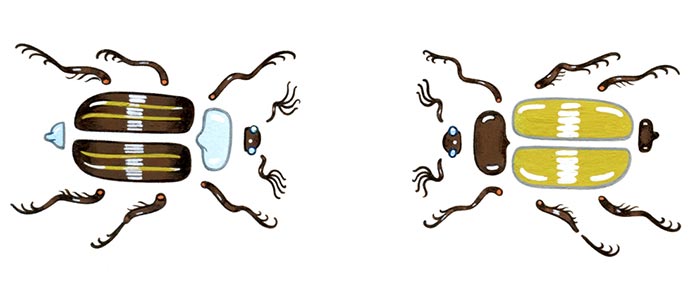At eight o’clock sharp on an unusually warm October morning, about a dozen soldiers gather under a hangar at Camp Souter, a military base in northwestern Kabul. The men and women swaddle night-vision goggles in bubble wrap before lowering them into cardboard boxes. Each item bears a label with a stock number, a brief description, the date, the inspector’s name and unit, and its destination: first a Canadian base in Kuwait, then onward to the national supply depot in Montreal. The atmosphere in the hangar feels like a protracted, meticulous garage sale.
Surrounded by Hesco bastions and concertina wire, the Mission Closure Team has the unglamorous task of packing up Canada’s twelve years of war in Afghanistan. What to ship out? (Twenty-three-tonne armoured heavy support vehicle system trucks.) What to leave behind? (PPNS—papers, pens, and supplies.) Pallet jacks pick up boxes brimming with the sundries of war: a radio amplifier, a shovel, a first aid kit, some cables, a tool box emblazoned with DO NOT FUCKING TOUCH in block letters, a lone tambourine. The boxes will be airlifted to Kuwait before continuing to Canada by sea, a total of 17,745 kilometres. Sergeant Steve Loranger, a laconic, even-keeled soldier from Drummondville, Quebec, holds his masking tape at the ready. “We started on August 8,” he says. “We’ve been going at it for the past forty-five days.”
By March, just a hundred Canadian troops (who call themselves the Kabul 100) will remain in Afghanistan, down from the 3,000 or so deployed here at the peak of the surge in 2010. The Afghanistan war has claimed the lives of 158 Canadian soldiers, the third-highest number of fatalities among NATO forces. It has been the longest war in Canadian history, and, adjusted for inflation, the most expensive since Korea, costing taxpayers at least $16 billion, according to one estimate. The media, however, has largely ignored this final rotation. In January 2013, Colonel John Valtonen announced to friends that he was being deployed for his first tour. “The response was, Are we still there? ” he says.
For those still serving, this is the time to reflect on over a decade of hard conflict. After the terrorist attacks on September 11, 2001, when Ottawa first made the case for following the United States into Afghanistan, the objectives were couched in grand terms: national defence, Canadian leadership, and helping the war-torn country rebuild. Prime Minister Jean Chrétien described Canada as “part of an unprecedented coalition of nations that has come together to fight the threat of terrorism,” pledging to send six ships, six aircraft, and 2,000 soldiers.
Now the mood is more humble. With few signs of hope and most American troops scheduled to withdraw by the end of this year, other NATO countries have little inclination to remain—but they will leave behind a nation in peril. Afghanistan’s democratic systems are febrile, its economy stands on the brink of collapse, and tens of thousands of civilians have been killed. Meanwhile, President Hamid Karzai refuses to sign a security agreement that would ensure an ongoing American military presence. The only real growth seems to be in opium production, which, according to the UN, hit record levels last year; one watchdog organization recently warned that the country could become a “narco-criminal state.”
The current Canadian rotation hopes to achieve just a few things: train and advise the Afghan police and military, preserve what progress has been made, and return personnel and equipment to Canada. Not all of the gear, though, will be shipped home. In the past fiscal year, Ottawa spent $318,000 cutting up old material; among the items being discarded are forty-five RG-31s, armoured personnel carriers built to resist serious blasts. They averaged $1.2 million apiece to purchase, and it would have cost $3 million to send them all back to Canada. Instead, they are being destroyed in theatre for $5,500 each. “They saved lives, and now they’re being put to sleep,” says Colonel Stephen Blair, the top commander for the drawdown. He smiles wanly, his tone almost apologetic.
After being dismantled, husked, and sheared, the RG-31s will be sold to local scrap dealers. Junkyard owner Humayun Kamal is one of a dozen or so contractors who have benefited from the clean-up. His property, west of Kabul, overflows with the war’s detritus. One pile consists entirely of axles; another, mufflers. Stacks of metal sheets sit in a shipping container, waiting to be sent to smelters in Peshawar or Lahore, Pakistan, where they will be melted down and repurposed as rebar or razor blades.
Kamal, young and boyish, brags of his success: with his profit margins reaching 500 percent, he says 2013 was his best year yet. As NATO forces continue their exodus, leaving more scrap behind, he predicts that 2014 will be even better. What will he do when the foreign troops are gone for good? “Maybe I will start a drug business,” he muses. “For one kilogram, you can get much more money than for scrap!”
This appeared in the April 2014 issue.





